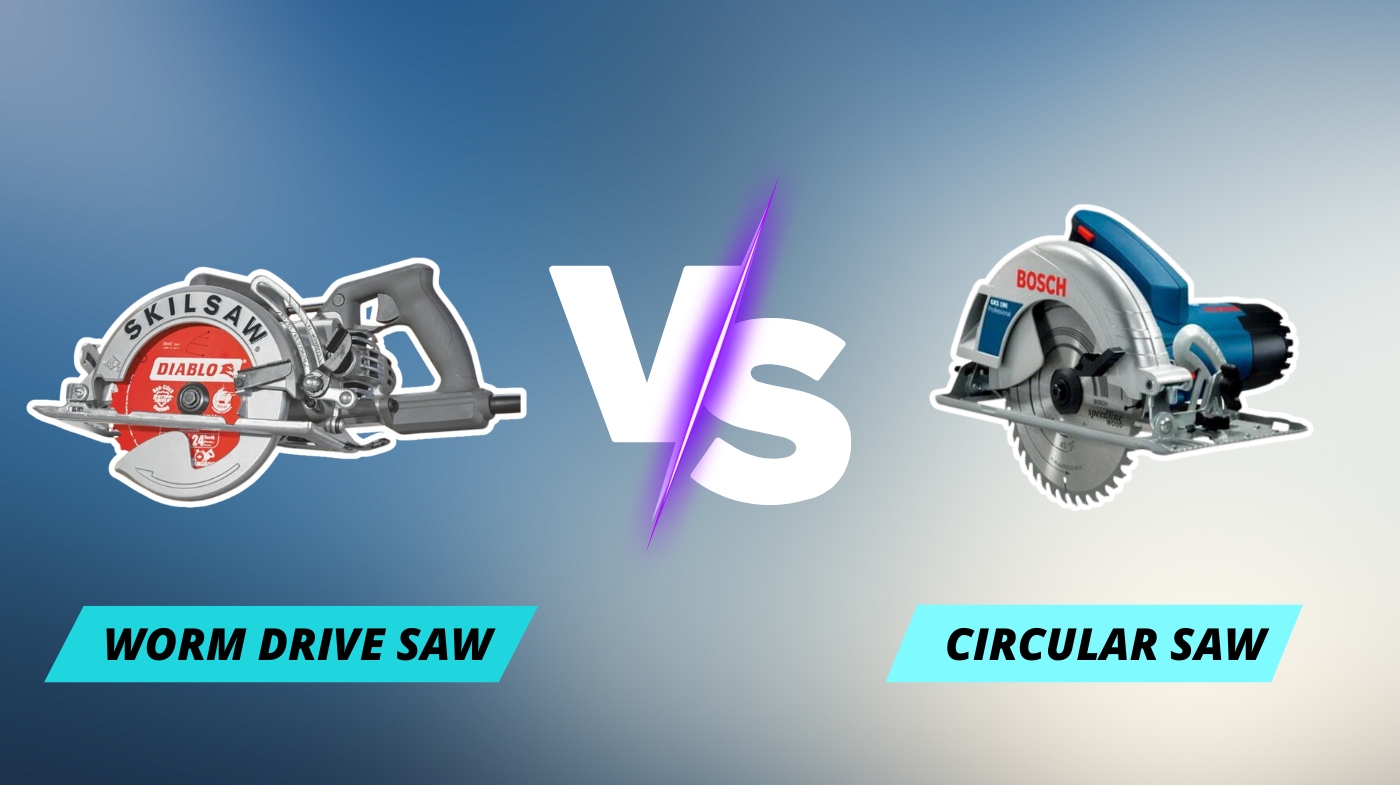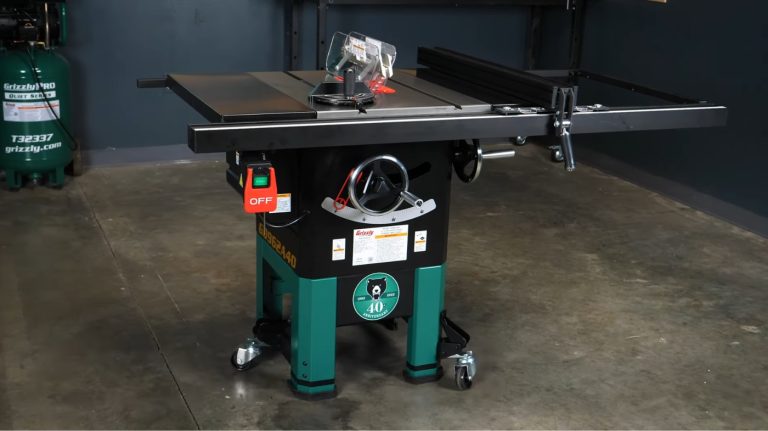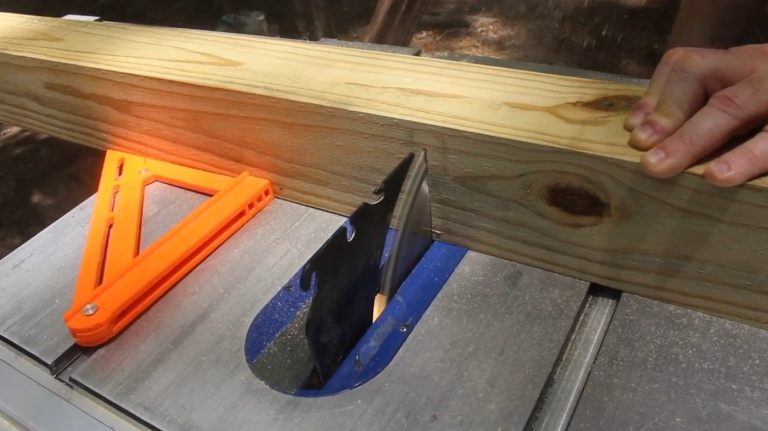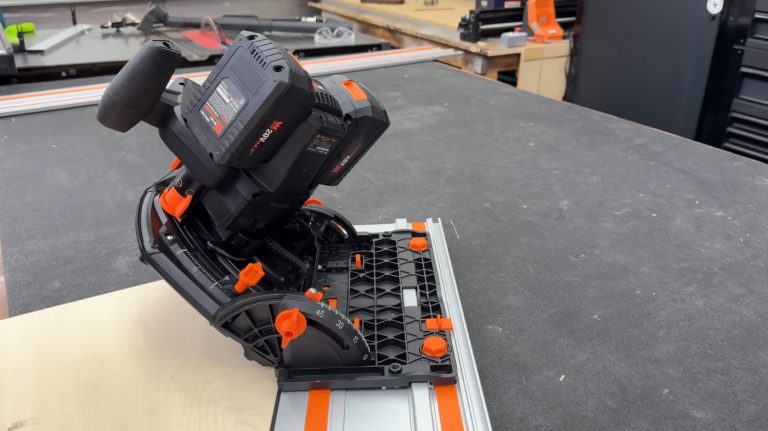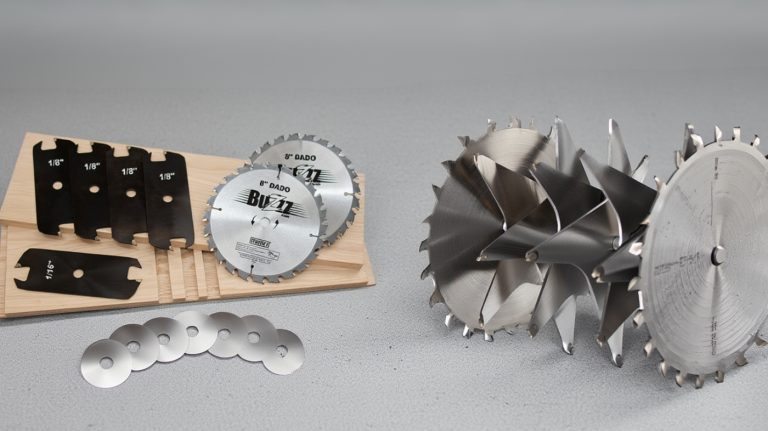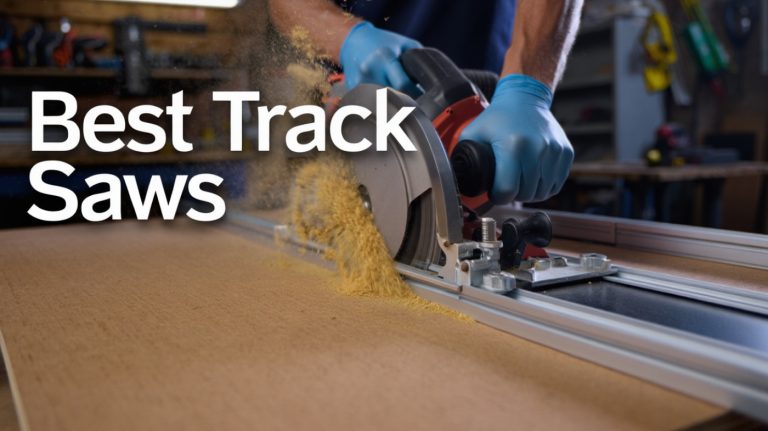Worm Drive Saw vs Circular Saw: Primary Differences
When choosing between a worm drive saw and a circular saw, consider torque and weight: worm drives place the motor behind the blade with a worm gear, delivering higher torque and durability for heavy framing, though they’re heavier and longer.
Circular saws have motors beside the blade, spinning faster but with less torque, making them lighter and more nimble for quick, versatile cuts. Understanding design, power, and ergonomics will help you select the right tool for your projects.
- Dual-Field Motor is especially designed for saws; increases cooling and extends tool life
- Lightweight construction (14.2 lbs. without blade, cord and wrench) reduces user fatigue
- Cut Ready depth-of-cut system helps with quick accurate depth adjustments
- 5150 RPM motor of DEWALT circular saw delivers power and speed to make the most demanding cuts with…
- High strength and lightweight magnesium shoe of the corded circular saw provides jobsite durability…
- Optimized rubber overmolded comfort grip of the compact circular saw delivers optimal balance and…
Key Takeaways
- Worm drive saws have a rear motor with worm gear for high torque and stability, ideal for heavy-duty framing and thick lumber cuts.
- Circular saws feature a side motor beside the blade, offering higher RPM for faster, lighter cuts and better portability.
- Worm drive blades are on the left side, improving cut line visibility and control for right-handed users, unlike circular saws with right-side blades.
- The heavier, longer worm drive design offers greater leverage and durability, while circular saws are lighter and more maneuverable for quick tasks.
- Worm drive saws suit dense materials and construction work; circular saws excel in renovation, decking, and versatile, lighter applications.
Worm Drive Saw vs Circular Saw Comparison Table
| Aspect | Worm Drive Saw | Circular Saw |
|---|---|---|
| Motor Position | Rear-mounted motor behind blade | Side-mounted motor beside blade |
| Blade Location | Left-side blade placement | Right-side blade placement |
| Weight | Heavier (11-14 pounds) | Lighter (10-12 pounds) |
| Torque | Higher torque for heavy-duty cuts | Lower torque but faster operation |
| Speed (RPM) | Lower speed (~4,250 RPM) | Higher speed (~6,000 RPM) |
| Power Source | Typically corded (15 amps) | Corded or cordless options |
| Best For | Heavy framing, thick lumber, construction | Quick cuts, renovation, versatile tasks |
| Visibility | Better cut line visibility for right-handed users | Cut line can be obstructed |
| Maneuverability | Less maneuverable due to size/weight | More nimble and portable |
| Durability | More durable for heavy-duty use | Good durability for general use |
Definition and Basic Functionality of Worm Drive and Circular Saws
A worm drive saw and a circular saw may look similar at first glance, but understanding their definitions and basic functionalities reveals key differences that impact performance and usability.
A worm drive saw features a motor positioned at the rear, connected to the blade via a worm gear system with perpendicular axes, delivering high torque at lower speeds.
Its blade sits on the left side, enhancing visibility for right-handed users, and the saw’s long, narrow body adds stability for heavy-duty tasks. This design also supports enhanced control and stability during cutting, especially for larger materials.
Conversely, a circular saw typically has its motor beside the blade with direct-drive power transmission, resulting in higher RPM but less torque.
This design places the blade on the right side and offers a compact, lightweight tool suited for versatile, fast cutting in a range of materials and user skill levels.
Circular saws are generally lighter weight, which enhances portability and ease of use in tight spaces. Their top handle design can sometimes obstruct the sightline, slightly affecting cutting precision compared to rear handle models.
Key Design Differences Between Worm Drive and Circular Saws
When choosing between worm drive and circular saws, you’ll notice some key differences:
Motor and Gear Placement
Though both worm drive and circular saws serve similar cutting purposes, their motor and gear placements differ fundamentally, directly impacting performance and handling.
Worm drives mount the motor parallel to the blade, using a worm gear to transfer torque with high durability and increased power.
Circular saws position the motor perpendicular, yielding higher blade speeds and a lighter, more compact tool. The worm drive’s design with thick-set teeth and a narrow worm gear ensures long-lasting durability ideal for heavy-duty applications.
Additionally, factors such as motor power and voltage play a critical role in the saw’s overall capability and efficiency, much like the motor power specifications seen in professional table saws.
| Feature | Worm Drive Saw | Circular (Sidewinder) Saw |
|---|---|---|
| Motor Orientation | Parallel to blade | Perpendicular to blade |
| Gear Type | Worm and worm gear (90° torque) | Direct side-to-side gearing |
| Blade Side | Left | Right |
| Resulting Benefits | Higher torque, durable, stable | Higher RPM, lighter, compact |
Blade Orientation and Visibility
Since blade orientation directly affects your line of sight and control during cutting, understanding its impact is essential when choosing between worm drive and circular saws.
Worm drive saws typically have a left-side blade, which benefits right-handed users by providing an unobstructed view of the cut line, enhancing accuracy and control.
This orientation also places the saw’s weight over the good side of the material, improving stability and reducing tear-out.
Additionally, the traditional blade-left orientation of worm drive saws supports better weight distribution and torque characteristics, which can be advantageous in heavy-duty applications. Their motor setup often allows for greater torque, similar to the benefits seen in belt drive systems known for higher power and durability.
In contrast, most circular saws feature a right-side blade, which can obscure your view of the cut line and force awkward body positioning, potentially compromising precision.
The left-side blade design lets you maintain better sightlines and safer operation during one-handed cuts, making it ideal for framing and detailed carpentry where visibility and control are critical.
Weight and Ergonomics
A key factor you’ll notice between worm drive and circular saws is their weight and ergonomic design, which directly influence handling, control, and user fatigue.
Worm drive saws typically weigh 11 to 14 pounds, heavier due to larger gear housings and motor placement. Circular saws are lighter, usually 10–12 pounds. This weight difference affects stability and fatigue during prolonged use.
- Worm drives have a longer, narrower body with a rear handle aligned to the motor, providing better torque control and leverage but requiring more strength to maintain precision. Their motor centerline alignment with handles, parallel to the saw blade plane, enhances power delivery.
- Circular saws feature a compact design with a pistol grip handle, offering balance and nimbleness but less torque leverage.
- Weight distribution in worm drives favors right-handed users, enhancing cutline visibility but reducing maneuverability compared to more balanced circular saws.
Power Sources and Motor Placement Explained
When selecting between a worm drive saw and a circular saw, understanding their power sources and motor placement is crucial for matching the tool to your project needs.
Worm drive saws are typically corded and demand around 15 amps, offering consistent power for heavy-duty tasks. They often feature a worm drive gearbox which provides enhanced torque and durability for demanding applications.
Worm drive saws deliver consistent, heavy-duty power with their corded 15-amp motors.
Circular saws provide more versatility, available in both corded and cordless models, with cordless options excelling in energy efficiency and portability. Their versatility extends to blade selection, allowing users to optimize cutting performance for various materials.
Motor placement differs markedly: worm drive saws position the motor behind the blade, creating a compact design with a gearbox that boosts torque but shifts weight forward.
Circular saws often have the motor aligned with the blade, relying on direct drive and basic airflow cooling.
Torque, Speed, and Performance Comparison
You’ll notice worm drive saws deliver higher torque thanks to their 90-degree worm gearing and rear motor design. This makes them better for dense materials and kickback resistance.
The worm drive saws typically operate at approximately 4,250 RPM, spinning slower but with greater torque than sidewinders.
In contrast, circular saws run faster with blade speeds exceeding 6,000 RPM due to their direct-drive systems. They are ideal for lighter, quicker cuts.
Additionally, circular saws are highly versatile and can be adapted for various woodworking tasks, including straight, bevel, and crosscuts when mounted on a stable base or guide system for precision cutting.
Torque Advantages
Although manufacturers rarely publish exact torque figures, worm drive saws consistently deliver markedly higher torque than sidewinder circular saws due to their unique worm gear mechanism.
This gear setup, with its 90-degree spiral design, converts motor power into substantially greater torque at the blade, enhancing cutting force for dense materials. The design often results in a heavier saw but provides superior cutting power for tough materials.
In contrast, sidewinders prioritize blade speed over torque with a direct drive system, which allows for a higher RPM typically around 6,000 compared to the worm drive’s lower RPM.
When considering torque advantages, note these key points:
- Worm drives maintain cutting power under heavy loads, minimizing blade bogging during tough cuts.
- Their rear motor placement and gear transmission increase torque but result in lower RPM and heavier saws.
- Higher torque improves control and kickback resistance, essential for bevel and long rip cuts.
Speed Differences
Torque plays a significant role in a saw’s cutting ability, but speed differences between worm drive and circular saws also influence their overall performance.
Circular saws spin faster, typically around 6,000 RPM, enabling quicker cuts on lighter materials. Worm drives max out near 4,500 RPM, trading speed for higher torque and better shock load handling.
Their gear reduction lowers speed but boosts power, ideal for dense wood and long rip cuts. Additionally, worm-drive saws position the motor behind the blade, which contributes to their better reach in certain cutting applications.
This trade-off between speed and power is similar to how brands like DeWalt prioritize power and performance in their saw designs.
| Saw Type | Max RPM | Performance Focus |
|---|---|---|
| Circular Saw | ~6,000 | Speed, lightweight, crosscuts |
| Worm Drive Saw | ~4,500 | Torque, durability, ripping |
| Cordless Sidewinder | 6,000+ | Speed with growing power |
Ergonomics and User Comfort Considerations
When selecting between a worm drive saw and a circular saw, understanding the ergonomic design and user comfort factors can considerably impact your efficiency and fatigue levels.
Worm drive saws, with their heavier weight and longer design, offer better balance for users with larger hands due to the rear handle layout.
Their gear design reduces vibration, enhancing comfort during prolonged use. Additionally, the slower blade speed provides smoother cuts with less kickback, decreasing strain.
Worm drives are longer, facilitating easier access across large sheets like plywood, which can improve handling in certain cutting tasks.
Regular maintenance practices, such as blade sharpening, can further enhance cutting performance and reduce user fatigue.
Key considerations include:
- Grip and Handle Design: Rear handles offer extended grip and ergonomic contours, improving control and comfort.
- Vibration and Noise Reduction: Worm gear mechanisms and sealed motor housings minimize vibration and noise transmission.
- Weight and Maneuverability: Heavier weight affects portability but improves torque delivery, reducing user exertion. However, the increased weight can make overhead or above-shoulder cuts more tiring, so sidewinders are often preferred for such applications due to their lighter weight advantage.
Common Applications for Each Saw Type
When you’re tackling framing or construction projects, a worm drive saw gives you the torque and stability needed for heavy timber and repetitive cuts.
Its motor at the rear and gear setup provide more torque compared to sidewinder saws. This makes it ideal for cutting through thick materials that require consistent power and precision.
For deck building, its power handles thick lumber and long planks with ease. The ability to accommodate larger blade sizes ensures efficient and clean cuts on substantial wood pieces.
A sidewinder saw’s lighter weight and agility make it better suited for landscaping and renovation tasks requiring precision and maneuverability. Its compact design allows for better control when working with thinner materials or in tight spaces.
Framing and Construction Uses
Although both worm drive and circular saws are common on construction sites, you’ll find worm drive saws excel in framing due to their superior torque and cutting power.
Their left-side blade placement improves visibility for right-handed users, letting you make precise cuts on thick lumber and sheet goods.
When tackling framing tasks, consider these advantages:
- Long rip cuts and gang cutting: The worm drive’s power and extended reach let you efficiently cut multiple large pieces. The spiral gears in worm drive saws provide enhanced torque that is crucial for cutting through tough framing materials.
- Plunge and mitered cuts: Its design facilitates complex cuts required for framing joints and angles.
- Durability and reduced fatigue: The saw’s reliability and torque reduce operator strain during prolonged heavy-duty work.
While circular saws offer versatility, worm drive saws provide unmatched performance in demanding framing and construction applications.
Deck Building Applications
How do you choose the right saw for deck building tasks? For heavy-duty framing, worm drive saws excel—delivering high torque to cut large posts and beams in fewer passes, ideal for rough notching.
Circular saws, with shallower blade depth, suit thinner decking boards and long, continuous cuts, especially when paired with composite blades to minimize splintering.
When cutting joists, circular saws handle straight, precise cuts well, aided by guides, but worm drive saws power through doubled or thicker lumber efficiently.
Using a DeWalt 3⁄8-in. right-angle drill/driver is essential for working in tight spaces around joists and framing, complementing the saw selection for confined areas.
For angled and miter cuts on railings and stairs, circular saws combined with drop saws offer superior accuracy. Portability favors circular saws during decking installation, while worm drives speed up framing.
Landscaping and Renovation Tasks
Why choose between a worm drive saw and a circular saw for landscaping and renovation tasks? Both saw types offer unique benefits tailored to specific applications.
Worm drive saws deliver high torque, ideal for dense materials and concrete cutting, while circular saws excel in demolition and trim work with enhanced safety features.
Consider these practical uses:
- Landscaping: Worm drive saws provide portability and adjustable depth for garden structures, while circular saws offer blade guards essential for outdoor safety. Additionally, worm drive saws feature a motor positioned behind the blade, giving them high torque necessary for demanding cuts in landscaping materials.
- Renovations: Use worm drive saws for framing and cutting wet lumber; circular saws suit demolition and siding trimming.
- Versatility: Both handle framing lumber and sheet goods, but worm drives perform better in tight spaces due to their narrow profile and superior kickback resistance.
Advantages for Right-Handed Users
When you operate a worm drive saw designed with the blade on the left, you gain a clear advantage in visibility and control as a right-handed user.
The left blade placement keeps the cut line in your direct sightline, allowing your right hand to guide the saw accurately while your left hand stabilizes the workpiece.
This ergonomic setup enhances stability, weight distribution, and reduces awkward arm positions. Additionally, left blade saws tend to throw sawdust away from the operator, improving cleanliness and safety on the job site.
| Feature | Worm Drive (Blade Left) | Circular Saw (Blade Right) |
|---|---|---|
| Visibility | Clear cut line, no leaning required | Cut line may be obscured |
| Weight Distribution | Weight over workpiece for control | Weight less ideally positioned |
| Ergonomics | Natural right-hand operation | Potential arm crossover or lean |
Geographic and Professional Preferences
Although saw choice often depends on individual preference, geographic location and professional trade heavily influence whether you opt for a worm drive or circular saw.
On the West Coast and Midwest, worm drive saws dominate due to their superior torque, ideal for dense lumber and heavy framing. Conversely, East Coast professionals favor sidewinder circular saws for their lighter weight and maneuverability suited to urban environments.
Worm drive saws are favored by professionals for their ability to provide smooth, consistent performance during heavy-duty cuts.
Consider these factors when choosing:
- Regional Material Density: Dense woods inland and westward demand worm drive power for clean, deep cuts.
- Trade-Specific Needs: Framers prefer worm drives for bevel cuts; finish carpenters favor sidewinders for speed and control.
- Project Environment: Outdoor, large-scale projects align with worm drive robustness; tight, fast-paced jobs call for lighter sidewinders.
Popular Brands and Models in the Market
Five leading brands dominate the worm drive and circular saw market, each offering models tailored to specific cutting demands and user preferences.
Top brands shape the worm drive and circular saw market with expertly tailored models for diverse cutting needs.
SKILSAW excels with the lightweight SPT77WML worm drive saw, balancing power and maneuverability, while Bosch’s CSW41 delivers precision and robust build quality for professionals. These saws typically feature a worm-like spiral gear mechanism that distinguishes them from standard circular saws.
Makita’s 5477NB hypoid saw offers smooth, powerful cuts, ideal for thick materials. DEWALT’s FLEXVOLT 60V MAX cordless saw combines top-tier cutting power with portability, and Hilti’s Nuron 22V targets cordless convenience for pros.
On the circular saw side, Makita’s 5007 Magnesium model provides high RPM for smooth long cuts, Bosch’s 18V cordless variant balances power and portability, and DEWALT’s 20V cordless model leads in heavy-duty cordless applications.
Maintenance and Longevity Tips for Both Saw Types
Proper maintenance considerably extends the lifespan and performance of both worm drive and circular saws. For worm drive saws, regularly change gear oil—initially after 10 hours, then every 50 hours or annually—to maintain lubrication and prevent gear wear.
Worm-drive saws feature an oil-bath gearbox that requires cooling and lubrication for optimal function. Drain old oil fully and use manufacturer-specified lubricants to avoid gear damage. Keep blade bevel settings accurate on circular saws to prevent uneven wear and maintain cut precision.
Circular saws need less internal upkeep but require sharp blades and clean blade guards to reduce motor strain.
Both saws benefit from routine inspections of power cords and motor components to ensure safety and efficiency. Remove sawdust buildup around gears and blade cages to enable cooling and smooth operation.
Frequently Asked Questions
Can Worm Drive Saws Be Converted for Left-Handed Users?
You can’t easily convert worm drive saws for left-handed use because their blade orientation is fixed on the left side. The internal mechanics, like the worm drive gear, are designed specifically for that setup, making modifications complex and impractical.
Instead, you’ll need to adapt your technique through practice and muscle memory, as manufacturers don’t offer right-blade versions or reversible models due to mechanical and safety constraints.
How Do Worm Drive Saws Handle Cutting Metal or Masonry?
Cutting metal with a worm drive saw is like slicing through butter with a hot knife—you’ll need a specialized blade, such as the Freud Diablo Steel Demon, to get clean, cool cuts without overheating.
Masonry? Not so much. Worm drives lack suitable blades and aren’t designed for tough materials like concrete or brick.
For masonry, you’ll want a diamond blade saw, as worm drive saws simply can’t handle the hardness and abrasiveness effectively.
Are Worm Drive Saws Suitable for Cordless Battery Operation?
You can definitely use worm drive saws with cordless battery operation today. Advances in battery tech, like TRUEHVL™, give you powerful torque and longer runtimes.
Cordless models match the traditional design and feel while offering portability and convenience. Just keep in mind, battery life mightn’t equal corded versions under heavy loads, and managing heat is essential. With proper maintenance, cordless worm drive saws deliver professional-grade performance on the go.
What Safety Features Are Unique to Worm Drive Saws?
Safety shines with your worm drive saw through specialized features. Its smooth, steady worm drive gearing suppresses sudden torque spikes, slashing kickback risks.
Vari-Torque Clutch cleverly controls resistance by slipping under stress, preventing dangerous jams. You’ll appreciate the electronic brake that swiftly stops the blade after release, boosting protection. Plus, the lower center of gravity grants you greater stability, reducing tip-over chances during tough tasks.
How Do Worm Drive Saws Compare in Noise Levels to Sidewinders?
You’ll notice worm drive saws produce less noise than sidewinders due to their slower blade speeds and worm gear mechanism. Their lower RPM reduces sound output, making cuts quieter and smoother, especially through dense materials.
The motor alignment and robust construction also contribute to noise reduction. If noise control is important on your job site, worm drive saws offer a practical advantage without sacrificing power or torque.
Cut Smarter: Choose the Right Saw for the Job
Choosing between a worm drive and a circular saw is like picking the right tool for a race: worm drives deliver torque for heavy-duty tasks, while circular saws offer speed and versatility.
Imagine a mechanic’s wrench—sometimes you need brute force, other times quick adjustments. Understanding their design, power, and ergonomics helps you match the saw to your job. Use this knowledge to work smarter, ensuring precision and efficiency every cut you make.
- 13 Amp motor for more power and performance than the SKIL 5380
- 15% weight reduction vs. SKIL 5380, reduces user fatigue
- 51-Degree bevel with positive stops for great cut capacity
- LIGHTWEIGHT: The Bosch CSW41 Circular Saw provides better comfort and control. The tool’s…
- ACCURACY: Featuring a worm drive design, the CSW41 offers increased accuracy and precision. The left…
- TORQUE: The saw delivers 5,300 no-load rpm but weights only 13.2 lbs. The powerful 15-amp motor…
Last update on 2025-12-26 / Affiliate links / Images from Amazon Product Advertising API

